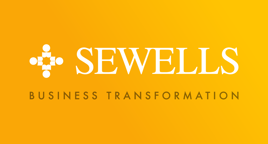This time, in our monthly advice series for automotive managers and business leaders, Sewells’ managing director Gail Harrison encourages AM readers to reflect and identify how they can lead from the front and ensure their teams are aligned with the strategy.
Like many industries, the automotive sector stands at the crossroads of unprecedented change. From technological innovations to shifting consumer expectations and regulatory pressures, business leaders and their teams face a dynamic landscape that demands a clear future vision, adaptability and the capability to engage others on the change journey.
Change of course is inevitable but navigating it effectively is what sets companies apart. The standout ones will be those who can:-
- Build a culture where change readiness is not only valued but actively encouraged.
- Focus on purpose-driven goals.
- Use a robust change management process to help with all change implementation.
- Harnessed leadership capability to engage the team.
- Leverage technology and data to maximum effect.
- Foster collaboration across not only the organisation but the industry and its partners to share insights and best practise.
- Guide and support team members through the continued transitions which will need to take place.
- Be resilient through times of multiple changes to be able to respond to rapid shifts in priorities.
One of the key roles of leadership, when faced with so much industry disruption, is how leaders can empower their teams to adapt effectively.
No amount of strategy documents however brilliant will substitute for execution. Yet many leaders struggle to foster a culture where employees demonstrate change readiness and follow through with willing implementation. In the past, leaders we have worked with have found that focusing on key areas can really help them to distinguish between core activities in this area and “nice to haves”.
Introducing: Positive Results Focussed Leadership
- Alignment: Knowing where you are going and why the change must happen, and being able to communicate that clear direction in such a way that people can connect to it individually and want to jump on board to help you deliver it. Leadership alignment. Team alignment.
- Belief: Having the faith, trust & motivation to commit yourself to the cause. Helping to instil that same belief and commitment in others. It’s only when we believe in what we are doing and why that we really commit ourselves.
- Culture: Leading from the front on Culture. Creating the right mindset, attitude & thinking so that everyone is demonstrating the behaviours you want and need to see to deliver change on a day-to-day basis. Building trust, positively influencing others, walking the talk.
- Development: What do you need in place to deliver? What knowledge, skills, expertise, capability & confidence is required for yourself and others? Developing the right people, thinking in the right way with the right tools to achieve desired results.
- Execution: Plan the action & action the plan. What needs to be done? Who needs to do it? What can you let go of? Creating the capacity to manage & deliver the plan.
Answering the following questions, or not being able to answer them, gives you some insights into areas you can work on to give yourself and others clarity on next steps:
1) Alignment: What’s your change Vision? How do you align your Team behind that Vision?
2) Belief: What do you believe is possible in relation to delivering the Change within your Team? Are you truly committed to Change? What can you do to help instill that belief in others?
3) Culture: How do you develop an unstoppable Team culture where team members take ownership & mutual accountability for change? How do you walk the talk every day? How do you communicate with & influence others?
4) Development: What needs to be in place to help you deliver? What areas do you need to develop in yourself and others? How can you do that?
5) Execution: What’s your plan? How will you deliver against your plan? How do you galvanise and motivate your team into action?
Whilst change is inevitable these challenges are complex and navigating the journey requires a commitment to forward-thinking leadership to ensure that automotive companies can not only weather the storm of change (which will never go away) but can emerge stronger and more competitive than ever.
This is always a perfect time of the year to reflect on the year we’ve just had and look ahead to see what the next year holds and whilst we may not be able to control every aspect of the changes coming down the track focusing on controlling the ones we can influence and change is essential.
The model and these questions might stimulate your thinking so that you and your team go into 2025 with a much clearer plan for change and the motivation to achieve the results you want.
 Author: Gail Harrison, managing director, Sewells
Author: Gail Harrison, managing director, Sewells


